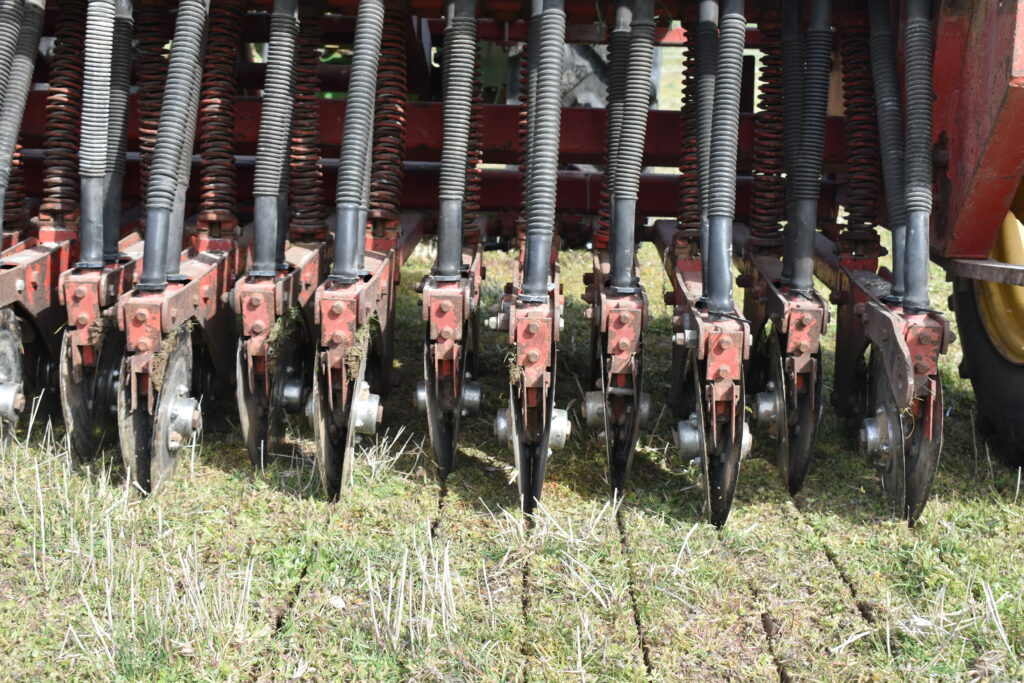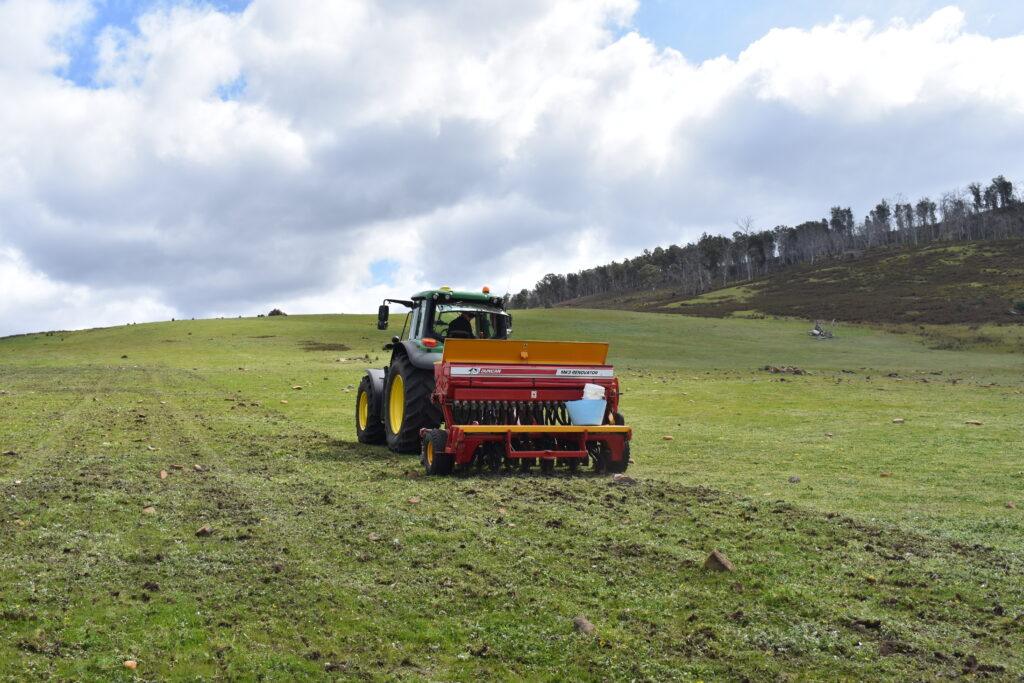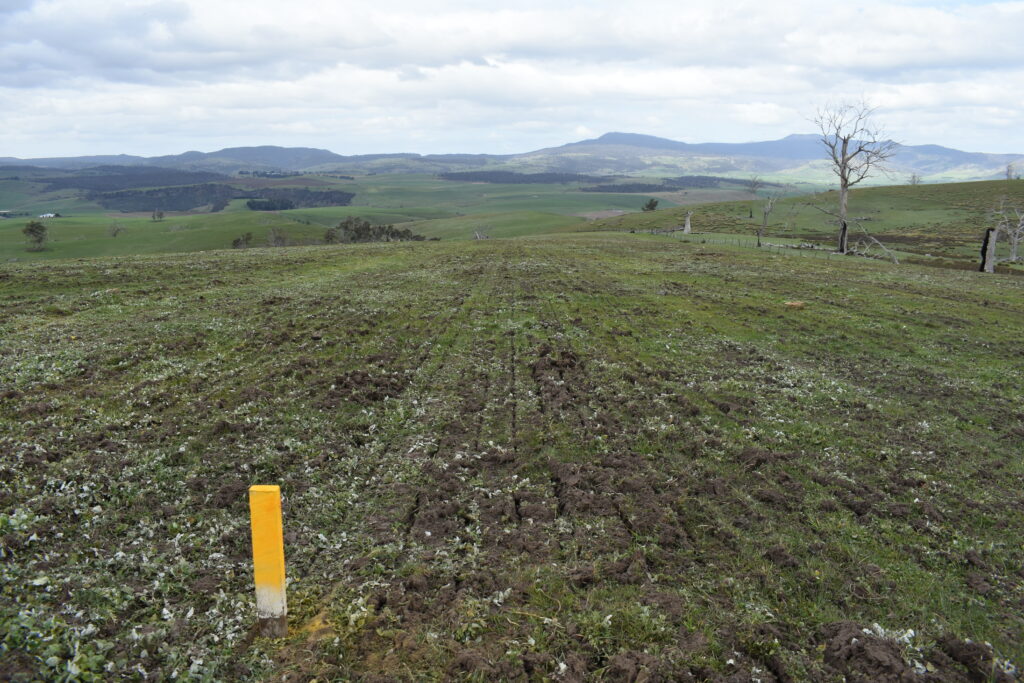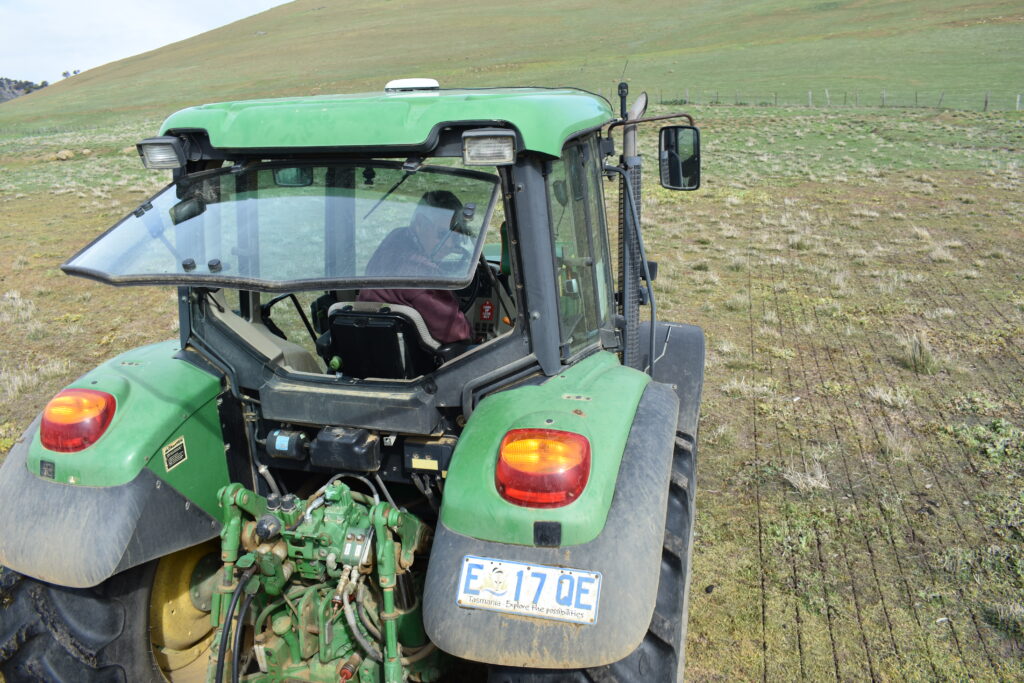The Derwent Valley’s semi-arid climate presents serious management challenges for the region’s dryland graziers. Cleared north-facing slopes are a particularly fragile component of farmland in this catchment and are difficult to incorporate into grazing systems. North-facing slopes often have a shallow stony profile, are prone to erosion and are some of the first areas to dry out during periods of low rainfall. If weedy annual grasses become dominant on these slopes, they can quickly go to seed under dry conditions – leading to soil exposure and weed infestations. Increasing perennial ground cover is therefore of critical importance both to protect soils from erosion and increase the production value of marginal land.
Putting different perennial grasses to the test
There is insufficient information on which commercially available perennial grass cultivars are best suited to Tasmania’s diverse landscapes and variable environmental conditions. This gives dryland growers very limited insight into what may work under their specific conditions and whether it is worth investing in pasture renovation of marginal land.
NRM South, through a partnership with the Derwent Catchment Project, is addressing this knowledge gap by putting different commercially available hardy perennial grasses to the test in the Derwent Valley. Pasture persistence demonstration sites have been established on north-facing slopes on three farms to compare two commercially available hardy perennial dryland grass species: phalaris (Phalaris aquatica) and cocksfoot (Dactylis glomerata). Different legumes (mainly red clover and grazing lucerne) were also included to test which commercially available perennial clovers can handle the harsh and dry conditions. Adding legume species is an integral part of pasture productivity as they fix nitrogen into the soil which is passed along to grasses and increases its nutritional value. Legumes are also a highly digestible protein-rich feed.
Since their establishment, the demonstration sites have been continuously monitored, which includes examining species composition and ground cover, pasture production and quality, plant persistence and cost of establishment and maintenance. The sites have now been integrated into the farms’ grazing regimes to see how the pastures perform under normal grazing management.
Demonstration sites adding value to local farming community
Peter Ball, Derwent Pasture Network extension officer and pasture specialist, explained that testing different grass cultivars under very harsh conditions helps to identify what works, gives people options, builds resource capability, and increases the capacity of enterprises to withstand challenges and develop resilience.
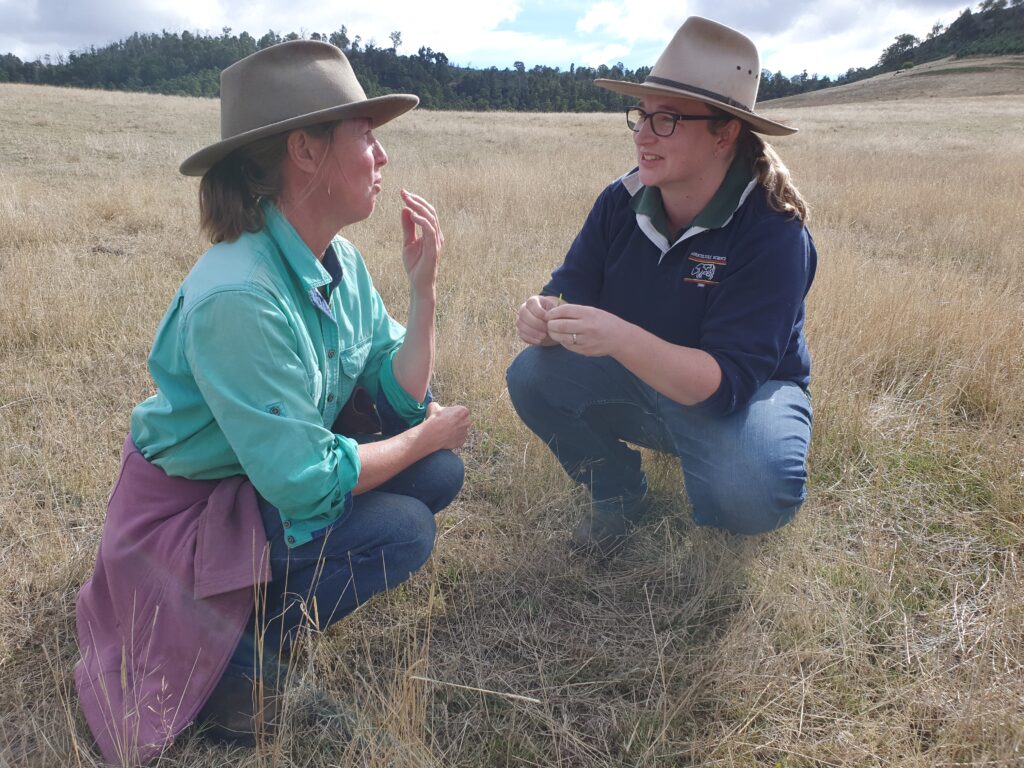
Sarah Gatenby-Clark, a sheep and cattle grazier, and one of the host farms for the demonstration sites, knows first-hand how difficult farming on north-facing slopes can be. ‘We often need to invest a lot of money into these harsher areas of the farm before results are returned. Having the demonstration site on our farm is an amazing opportunity for us to identify ideal pasture species for those areas and see which ones can handle rougher years and stay productive in the long term, so we don’t have to resow all the time’.
Some early insights and the importance of long-term monitoring
After just a few months, early changes have been observed. Peter has noted that sown areas are demonstrating some interesting contrasts and changes as compositions are shifting from early dominance of some species and cultivars to others. While farmers such as Sarah Gatenby-Clark already have an idea of those perennial grasses that perform well on her farm, she is interested in finding out more about what varieties do best and learn more about less well-known species. ‘I was impressed with the establishment of the legumes, which together with having highly nutritional grasses are key to our production as we really want to maximise what the cattle eat’.
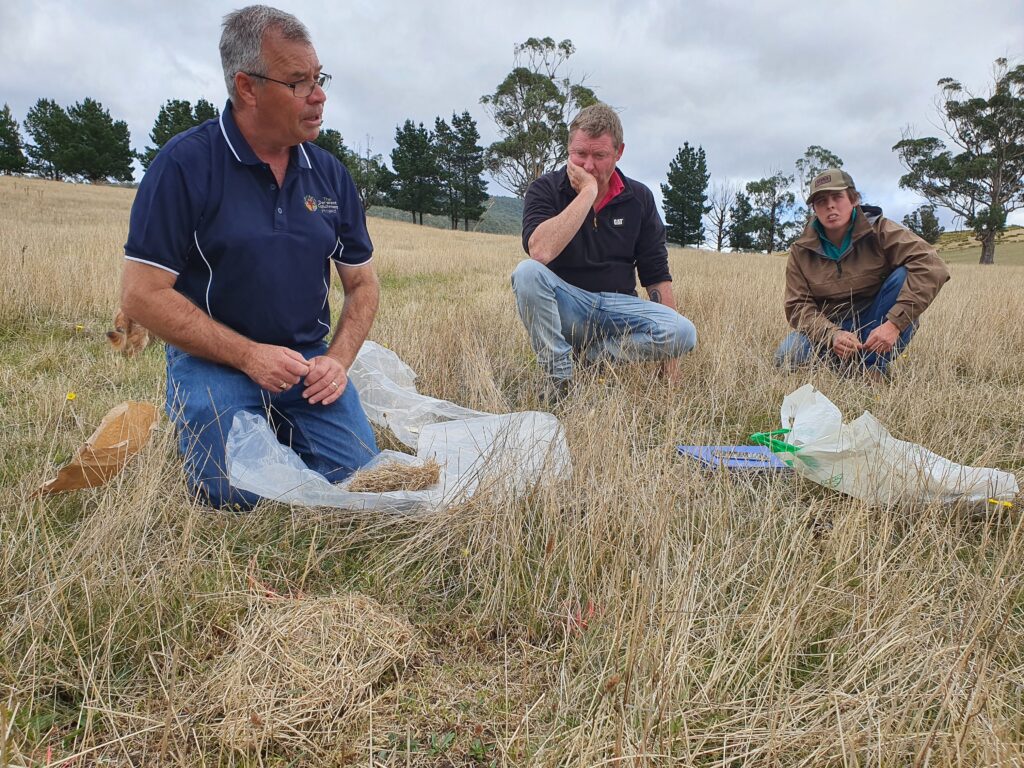
However, long-term monitoring, including species composition and ground cover, pasture production and quality, plant persistence and cost of establishment and maintenance, will be key to building an accurate picture of how to better manage and make use of marginal landscapes. ‘It’s important to not be misled by early establishment trends but examine the ongoing persistence and productivity of cultivars’ explained Peter, ‘The true assessment of persistence and merit will be a test of time’.
This project is supported by NRM South through funding from the Australian Government.
